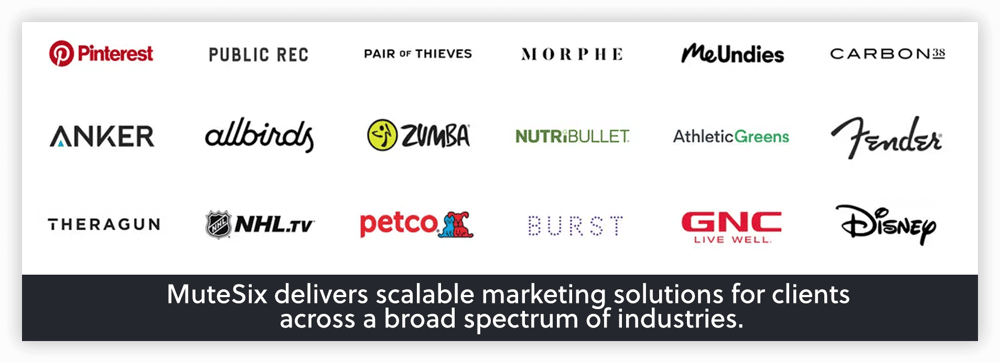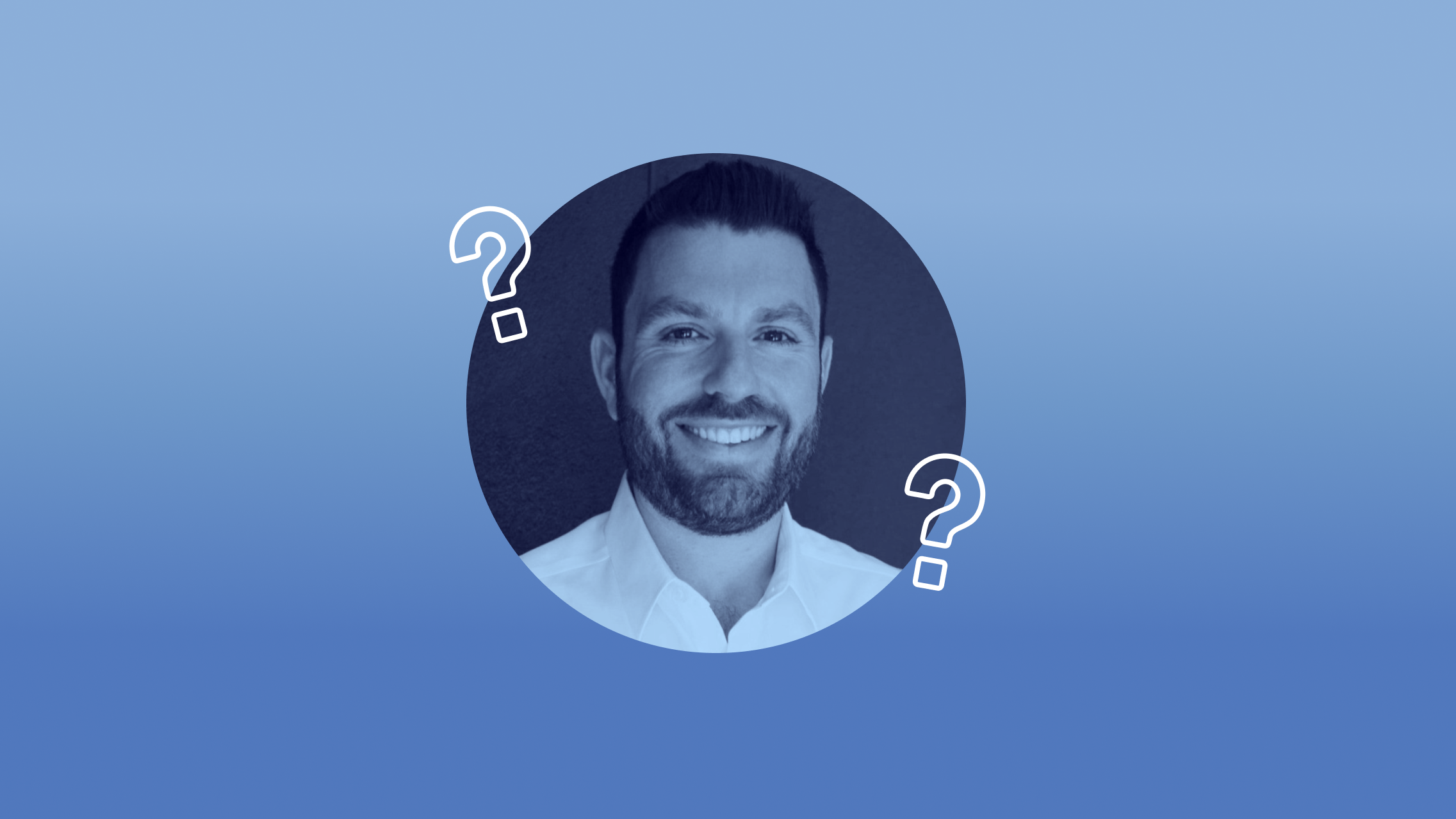As the Chief Revenue Officer for MuteSix, Greg Gillman uses omnichannel growth strategies to help generate $4B annual revenue for DTC brands.
In our May interview, Gillman reveals the exact steps your brand can take today to get started using Facebook ads, how you should approach attribution models and the secret to making a marketing video that converts.
MuteSix is an award-winning, full-funnel digital and creative studio providing intelligent ad solutions headquartered in Los Angeles, California. They have worked with brands like Disney, Petco, and Fender, and recently racked up three awards at the 27th Annual Communicator Awards.
1. What kinds of clients does MuteSix work with?
We work primarily with digitally native, direct-to-consumer e-commerce companies. Think high growth. Fashion and apparel. Health and wellness. Food subscription services. And disruptor CPG brands. Companies like Theragun, where they’re basically pioneering their own vertical.
2. When should a brand hire MuteSix?
We will build companies from the ground up, but they need to be able to invest both in media spend and some basic-level content. For example, if they are okay investing $20K to $30K per month to prove out the concept, that’s the best time to engage with us. We don't want to engage with businesses if they are not confident in their own product.
 We are really good at what we do, which is making really great content for really cool products. What we are not good at doing is selling products that even the entrepreneur is questioning.
We are really good at what we do, which is making really great content for really cool products. What we are not good at doing is selling products that even the entrepreneur is questioning.
“The first thing I ask any business I work with is, ‘What are the five reasons people like your business or product? What are the five reasons they don't?’ Build a funnel over 30 days to unpack all 10 of those things, and then you're going to sell your product.”
3. What is one common marketing pitfall store owners should avoid?
I've worked with companies that get too tied to just one attribution model, like that rely solely on Google Last Click. If you rely on that approach, you're going to be in trouble. I’ve worked with businesses that can't let go of it. Facebook over reports. Google over reports. So, you have to find a medium between the two. Otherwise, you're never going to scale your business.
Google is saying that Facebook’s taking too much credit. Sure. It is. But you have to build a model that works and allows you to spend money. You have to say, “Okay, this one over reports. That one under reports.” And build a blended model that will allow you to scale.
"Build something. And then build a couple more things and test them all."
Everyone has a different take on how to model. You can't just look at one because they are all skewed to make their own numbers look more favorable. That’s the biggest issue. And there's no way around it. That's why it remains the biggest problem. I mean, there are very expensive solutions that do work, but there's no single solution that solves it 100%.
4. What are 3 things eCommerce business owners can do to get started using Facebook ads?
First, create some scrappy content. You can shoot it with your iPhone. Build video content that looks native. You don’t want it to look like an ad. It can be you talking about the product. Your friends talking about the product. Or it can be you showing how the product works. The iPhone is probably your best asset. Build something. And then build a couple more things and test them all. There's no cost if you do it yourself.
Next, build a tiered remarketing strategy. So when you build your ads, you show an ad to someone who just hit your site. Three days later, you show a different one to someone who puts something in the cart. Then, 14 days later, they're still in this 30-day consideration phase.
Use different content every step of the way. At three days, seven days, etc. You want to move people through the funnel using different content at each stage, hitting on different objections and pain points.
“Optimize around the first three seconds.”
The first thing I ask any business I work with is, “What are the five reasons people like your business or your product? What are the five reasons they don't?" Build a funnel over 30 days to unpack all 10 of those things, and then you're going to sell your product.
Finally, don't be afraid to lose money. It’s an investment just like any other you make in the market. You make an investment to figure out what works and what doesn't. So, don't be afraid to lose. Take calculated risks, but don't be afraid to lose money out the gate.
No one, I mean, literally, like 1% of the businesses that we work with may go on a tear out the gate. Because they have an organic following. There's some celebrity who pumps them or there's something extra cool about it.
5. What’s the secret to making a video that converts?
Focus on the problem and the solution. We optimize around what’s called a “thumb-stop rate,” which is three-second video views. We know if we can get over 30% of people watching more than three seconds, then we have a good shot. That's how we know if a video is going to work or not because you have about three seconds to capture someone’s attention.
So, on Facebook, optimize around the first three seconds and then the subsequent 10. Because if you have this great content but no one's watching it, you're never going to get them into the funnel. Focus on the hook. And split test the hooks. If something's not working, change the first five to 10 seconds of it.
•••
Follow Gred Gillman on LinkedIn. Do you think MuteSix might be a good fit to work with your brand? Request a free marketing consultation from MuteSix.
Try Rebuy free and see why the world’s top brands use Rebuy to accelerate sales growth.
Interested in partnering with Rebuy? Let's do it. To keep up with the latest trends, platform updates, and more, follow us on LinkedIn.
